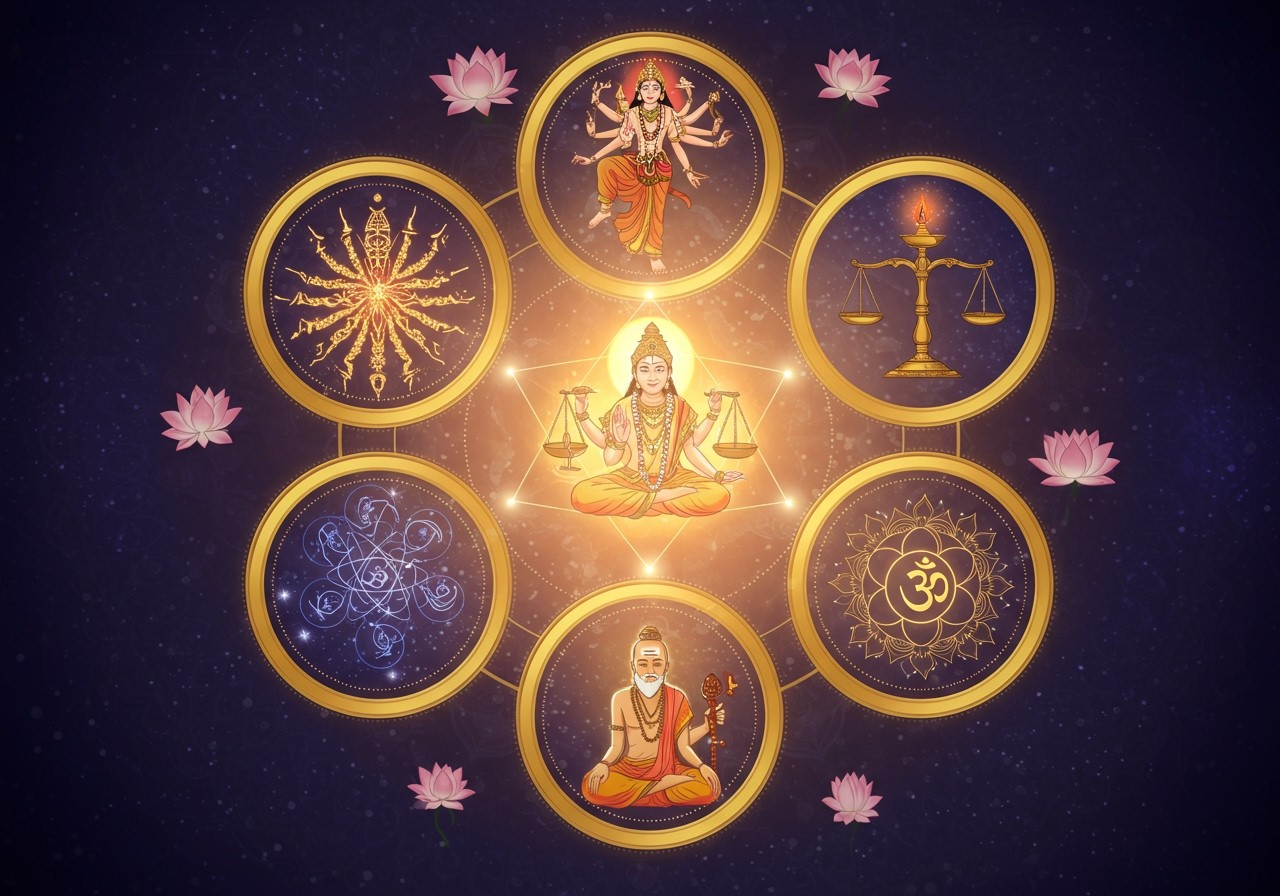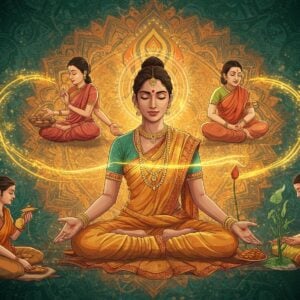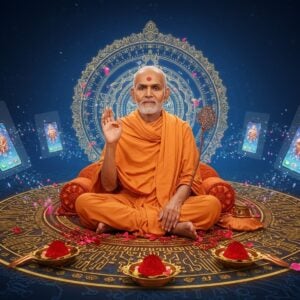
Indian philosophy is deeply rooted in tradition and spirituality, forming a significant part of India’s cultural identity. The term “Astika” refers to the orthodox schools of thought that recognize the authority of the Vedas, ancient sacred texts. These philosophies continue to influence contemporary Indian society, reflecting the timeless quest for knowledge and truth. There are six Astika Darshanas: Nyaya, Vaisheshika, Samkhya, Yoga, Purva Mimamsa, and Uttara Mimamsa (Vedanta).
Introduction to Astika Darshana
Astika Darshana is a collective term for the six orthodox schools of Indian philosophy. These schools accept the authority of the Vedas and provide a structured framework for understanding life and existence. Each school offers a unique perspective on reality, knowledge, and the path to liberation (moksha).
- Nyaya: This school, founded by Gautama (550 BC), focuses on logic and reasoning to understand truth. It explores the criteria for valid knowledge and the methods to acquire it, using systematic reasoning to distinguish valid from invalid knowledge. The Nyaya Sutras of Gautama are the foundational texts.
- Vaisheshika: Founded by Maharshi Kanada, Vaisheshika analyzes the nature of reality through categories such as substance, quality, and action. This school is closely related to Nyaya and aims for individual self-liberation.
- Samkhya: Considered the oldest of the orthodox schools and founded by Kapila Muni, Samkhya provides a materialistic ontology. This dualistic school recognizes two entities: Purusha (spirit) and Prakriti (nature). It emphasizes self-knowledge through concentration and meditation as the means to liberation.
- Yoga: Developed by the sage Patanjali, Yoga provides a methodology for uniting individual consciousness with Supreme Consciousness. The Yoga Sutras of Patanjali outline the principles of yoga. Closely associated with Samkhya philosophy, it emphasizes meditation and physical application for attaining salvation.
- Purva Mimamsa: This school emphasizes the ritualistic aspects of the Vedas, exploring the precise performance of rituals to maintain cosmic order.
- Uttara Mimamsa (Vedanta): Vedanta explores the philosophical aspects of the Vedas, seeking to understand the nature of reality, the self (Atma), and the ultimate reality (Brahman). Adi Shankaracharya is a key figure in Vedanta, with three prominent subschools: Advaita Vedanta (Shankaracharya), Vishishtadvaita Vedanta (Ramanujacharya), and Dvaita Vedanta (Madhavacharya).
Understanding these philosophies enriches our appreciation of India’s spiritual heritage and offers profound insights into the human experience. For a deeper understanding of Hindu philosophy, you can explore our blog post: Hindu Philosophy Explained: A Beginner’s Guide. This guide provides a comprehensive overview of key concepts and principles.
Delving into the Six Astika Darshanas
Each Astika Darshana offers a unique lens through which to explore existence. Let’s delve deeper into each of these schools:
Nyaya: The School of Logic and Reasoning
Nyaya emphasizes the importance of epistemology, the study of knowledge. It provides a systematic framework for critical thinking and logical analysis. By understanding the nature of valid knowledge, individuals can discern truth from falsehood.
Vaisheshika: The Atomist Framework
Vaisheshika explores the nature of reality through categories and classifications. Its atomistic approach breaks down the universe into its fundamental components. Understanding these components and their interactions is key to understanding the world around us.
Samkhya: Dualism and the Nature of Reality
Samkhya’s dualistic philosophy distinguishes between consciousness (Purusha) and matter (Prakriti). This distinction highlights the importance of self-realization and the pursuit of liberation.
Yoga: The Path to Union
Yoga offers practical methods for achieving union with the divine. Through practices like meditation and ethical conduct, individuals can cultivate self-awareness and move towards spiritual enlightenment. Explore our blog on Connecting With Your Inner Self: A Hindu Philosophy Guide for further insights.
Purva Mimamsa: The Significance of Rituals
Purva Mimamsa focuses on the correct interpretation and performance of Vedic rituals. It emphasizes the importance of dharma and the role of rituals in maintaining cosmic order. Learn more about sacred offerings in Hindu rituals at Sacred Offerings in Hindu Rituals: Their Importance and Meaning.
Vedanta: The Pursuit of Ultimate Reality
Vedanta explores the nature of Brahman, the ultimate reality, and its relationship to the individual self (Atman). It emphasizes the importance of self-knowledge and the realization of oneness with Brahman. For a deeper understanding, consider “Beyond the Temple: India’s Spiritual Heart Revealed” at Beyond the Temple: India’s Spiritual Heart Revealed.
Poojn.in: Supporting Your Spiritual Journey
Poojn.in offers a wide selection of authentic puja items and spiritual tools to enhance your practice and understanding of these philosophies. Whether you are seeking meditation mats, sacred texts, or ritual accessories, Poojn.in provides a convenient and reliable platform for all your spiritual needs.
Here are some products that can support your exploration of the Astika Darshanas:
- Bel Mala: Traditionally used for prayer and meditation, particularly beneficial for those following Samkhya and Yoga.
- Pooja Asan: Provides a comfortable and sacred space for meditation and study, ideal for practitioners of all six schools.
- Shiva Lingam: Represents divine consciousness, a powerful symbol for contemplation in Vedanta.
FAQs
What distinguishes Astika schools from Nastika schools? The primary difference lies in their acceptance of the Vedas. Astika schools recognize the Vedas as authoritative, while Nastika schools do not.
Are there other resources available to learn about Indian philosophy? Yes, numerous books, articles, and online resources provide further insights into Indian philosophy. You can also find information on exploring ancient culture at Siddhatek: Exploring Ancient Culture Beyond Religious Sites.
How can I incorporate these philosophies into my daily life? Begin by studying the core principles of each school and reflecting on their relevance to your own life. Practices such as meditation, mindfulness, and ethical conduct can help integrate these teachings into your daily routine. Explore our blog on Bhajans and Kirtans: A Deep Dive into Rich Traditions to discover the power of devotional practices.


